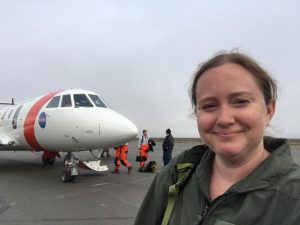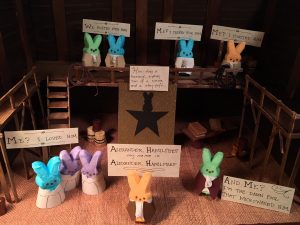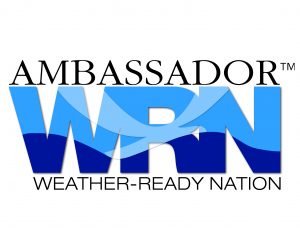For the past five years, Telophase science writer Kate Ramsayer has written extensively about all things NASA Earth science, interviewing scientists and engineers and even flying in a plane over the Alaskan wilderness to help tell the story of research at Goddard Space Flight Center. She closely follows the adventures of NASA’s ICESat-2, a laser-toting satellite currently set to launch in fall of 2018.
“I get to watch the launch in six months,” Ramsayer shares. “It’s pretty darn cool to see all the work that so many people have put into this satellite that now gets to go into space.”
ICESat-2, shorthand for the Ice, Cloud and land Elevation Satellite-2, will measure changes in polar ice with the help of six laser beams. As a science writer for the mission, Ramsayer’s role involves sharing the latest news on the satellite and explaining its purpose to the public. She also writes about Earth science at Goddard.

Before she became a writer, Ramsayer worked as a research assistant at the Massachusetts General Hospital Cancer Center, studying cell cycles and running experiments. As the child of a geologist father and a nature-loving mother, she cared deeply about science, but realized that the finicky foibles of research didn’t suit her.
“I prefer taking a look at the bigger picture and seeing how things work together,” Ramsayer says. This led her to the field of science writing, where writers translate complex science topics into simple, accessible language intended for public consumption.
Ramsayer soon applied to and was accepted by the University of California Santa Cruz Science Communication program, obtaining her graduate certificate in 2003. She worked at several daily newspapers in Oregon, starting out with The Daily Astorian on the Oregon coast and then transferring to The Bend Bulletin in central Oregon.
She moved to the Washington, DC area to work as a science writer for the American Geophysical Union and made the jump to NASA a few years later.
Ramsayer says she enjoys her job in part because she’s always learning something new. As a science writer, Ramsayer serves as a conduit between NASA and the public, putting information in context for readers.
“Basically, people should be able to know what’s going on at NASA, and most people cannot get there by reading scientific journals or calling up a scientist directly and asking what’s going on. So we get to act as that intermediary,” Ramsayer says.
Ramsayer works with teams from all over Goddard to bring NASA science to the public, and she describes her writing as largely collaborative. While she might serve as the lead writer on a piece, she connects with NASA social media teams to spread the message online, and she coordinates with data visualization specialists to bring the numbers in her stories to life.
In Ramsayer’s 2017 piece on NASA satellites monitoring the seasonal wax and wane of plants on Earth, she describes a world alive with vibrant blooms of growth. “In the Northern Hemisphere, ecosystems wake up in the spring, taking in carbon dioxide and exhaling oxygen as they sprout leaves — and a fleet of Earth-observing satellites tracks the spread of the newly green vegetation,” she writes.
Her descriptions are offset with vivid graphics that demonstrate the ever-shifting nature of Earth’s organisms.
“There are incredible animators and visualizers and video producers working here,” Ramsayer says. “It’s awesome to have all these super talented people working together to make a better story.”

When she’s not writing about NASA science, Ramsayer can be found knitting – scarves and hats mostly, she says – or creating annual dioramas with her friends. One diorama in particular caught the attention of certain Broadway composer, boosting Ramsayer and her friends into temporary internet stardom.
“The Washington Post used to run a marshmallow Peep diorama contest,” Ramsayer explains, “and we made a Hamilton Peep diorama that was retweeted by Lin-Manuel Miranda. It was amazing.”
The Huffington Post wrote an article about the scene, which depicts all the main characters of the musical Hamilton in Peep form, complete with tiny costumes and marshmallow-related puns.
“There are different ways to be creative,” Ramsayer laughs.
Between diorama-building and trips to the field, Ramsayer stays busy. Two years ago, she traveled to Alaska to write about the Arctic-Boreal Vulnerability Experiment, a large-scale field campaign in Western Canada and Alaska. She met with a researcher studying big horn sheep in Denali, and she flew in a plane over the Arctic with scientists to observe how they measure sea ice.
These trips to exciting places pull Ramsayer away from her writing desk, but does she mind? Not so much, she says, adding, “It was a good couple of weeks at work.”
Header image from Operation IceBridge taken by NASA/John Sonntag.

